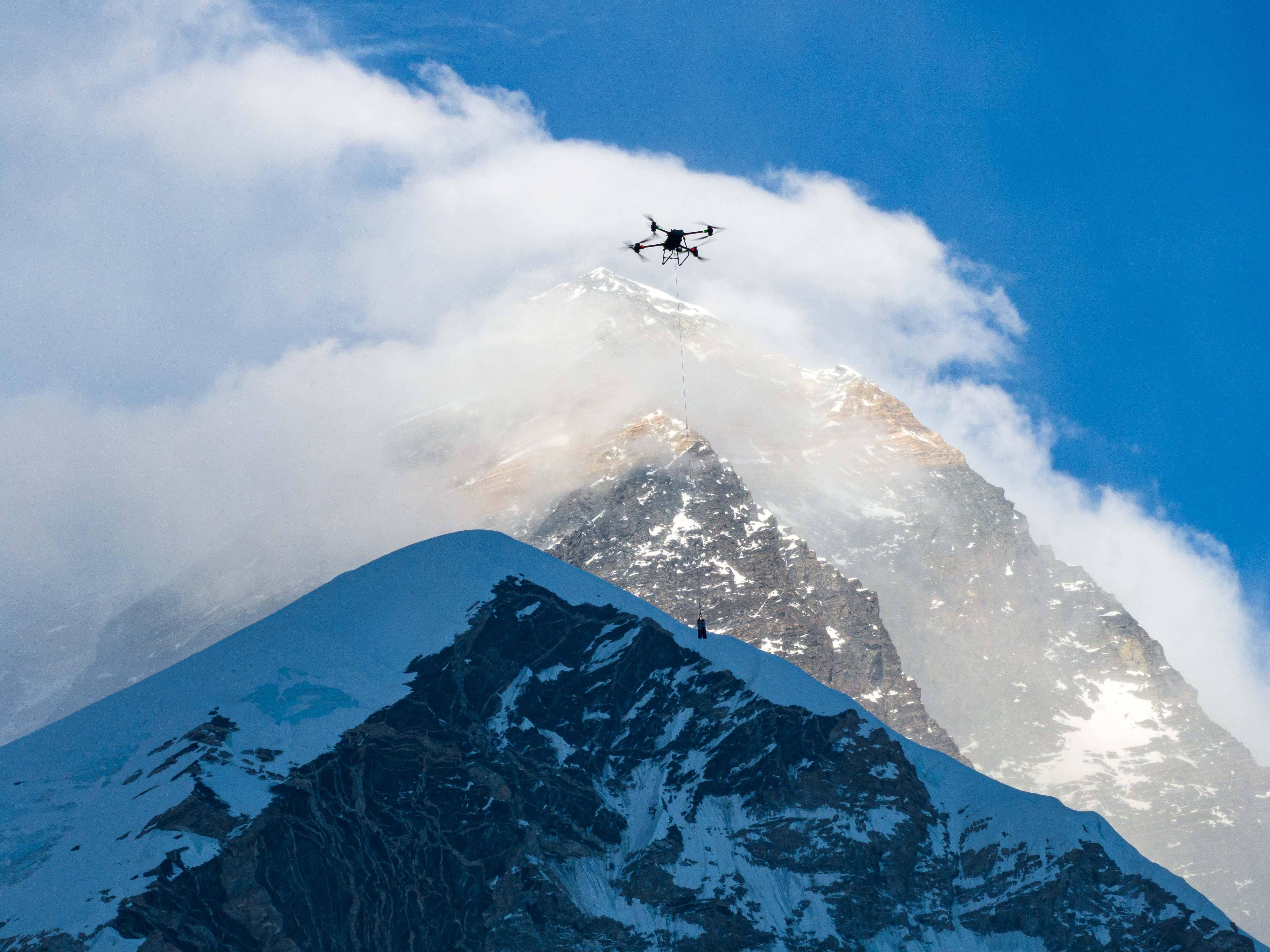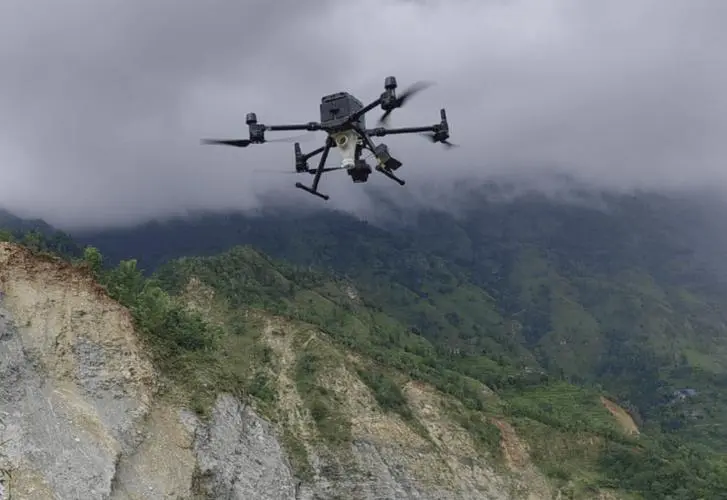Analyzing the Current Status and Trends of Global Development of Plant Protection Drones

Drones, as a high-performance aerial platform, were first applied in the military field. But with the development of technology and social changes, drones have begun to rapidly develop in the civilian field, especially in agricultural crop protection.
1、 Definition of Plant Protection Drones
Plant protection drones are unmanned aerial vehicles used for agricultural and forestry plant protection operations, mainly through ground remote control or GPS flight control, to achieve pesticide spraying operations. Compared with traditional crop protection operations, drone crop protection operations have the characteristics of precise operation, high efficiency and environmental protection, intelligence, and simple operation, saving farmers the cost of large machinery and a large amount of manpower.
2、 Classification and advantages of crop protection drones
(1) There are various types of crop protection drones, which can be classified into multiple types according to different criteria.
Divided by power: oil powered crop protection drone/electric crop protection drone
Divided by aircraft structure: fixed wing crop protection drone/single rotor crop protection drone/multi rotor crop protection drone
(2) Advantages of crop protection drones
1. Efficient and safe: Agricultural unmanned helicopters have fast flight speeds and can operate on a scale of 120-150 acres per hour, with an efficiency at least 100 times higher than conventional spraying; Plant protection drones are operated through ground remote control or GPS flight control, allowing spraying operators to operate remotely to avoid the danger of exposure to pesticides and improve the safety of spraying operations.
2. Water medicine saving and cost reduction: spray spraying by electric unmanned helicopter can save at least 50% of pesticide usage, 90% of water consumption, and greatly reduce resource costs.
3. The prevention and control effect is significant: unmanned aerial vehicles and helicopters have the characteristics of low operating altitude, less drift, and the ability to hover in the air. The downward airflow generated by the rotor during pesticide spraying helps to increase the penetration of logistics into crops, resulting in good prevention and control effects.
4. Low cost, easy to operate: Electric drones have a small overall size, light weight, low depreciation rate, easy maintenance, and low labor cost per unit operation; Easy to operate, operators can generally master the essentials and perform tasks after about 30 days of training.
3、 Development history of crop protection drones
The degree of application of crop protection drones varies among countries around the world, but overall, agricultural aviation technology is an important component of national agricultural production, and its application proportion in agricultural production is constantly increasing.
Japan is one of the earliest countries to use micro agricultural drones for agricultural production. In 1987, Yamaha Corporation was commissioned by the Japanese Ministry of Agriculture to produce the first agricultural drone - the 20kg class pesticide spraying drone "R-50". Subsequently, Japan widely applied unmanned helicopters to field crops. After more than 20 years of development, Japan has increased from 307 drones in 1995 to over 2400 currently, with more than 14000 operators, making it the world's largest agricultural drone spraying country.
The United States is one of the countries with the most mature agricultural aviation application technology, which has gone through the development process of manned helicopter plant protection technology and unmanned aerial vehicle plant protection technology, and has now formed a relatively complete agricultural aviation industry system. According to statistics, the United States currently has over 9000 agricultural aircraft, accounting for 28% of the world's total ownership. The direct contribution of agricultural aviation to agriculture is over 15%.
In addition to Japan and the United States, countries such as Russia and South Korea have also widely used crop protection drones in agriculture. Russia is vast and sparsely populated, with a large number of agricultural aircraft operation teams, up to 11000 aircraft, and an annual processing area of over 35% of the total arable land. South Korea first introduced unmanned helicopters for agricultural aviation operations in 2003. Since then, the number of agricultural drones and the area of agricultural aviation operations have been increasing year by year. South Korea's Ministry of Agriculture, Forestry, Fisheries and Food and the Central Committee of Agricultural Cooperatives plan to increase the number of drones by 100 per year in the future, bringing the total to 500 by 2003.
4、 Current situation of domestic crop protection drones
In the 1950s, China began to conduct research and application of aerial pesticide application technology. In 2004, research and promotion of unmanned aerial vehicle (UAV) crop protection began under the 863 Program of the Ministry of Science and Technology and the Nanjing Institute of Agricultural Mechanization of the Ministry of Agriculture; The industrialization exploration of China's first engineering type unmanned crop protection helicopter in 2007; Promotion and trial nationwide in the past two years.
In recent years, with the development of civilian drones, crop protection drones have also begun to "fly" into ordinary people's homes. According to relevant sources, with the expansion of land transfer scale, there is a potential market of nearly 100 billion yuan in China's crop protection drone industry. Although the development prospects of domestic crop protection drones are promising, there are still many obstacles to their development at present.
(1) The price of crop protection drones is daunting
Price is one of the key factors currently hindering the majority of large-scale agricultural households from using crop protection drones. At present, most provinces in China, especially in the northern plain areas with good conditions for large-scale agricultural production, have begun to try using crop protection drones. However, there are few provinces that can enjoy "agricultural machinery subsidies", and some potential customers are deterred by high prices. It is reported that there are over 100 domestic manufacturers of crop protection drones, and their product prices vary greatly, but generally remain between 50000 and 200000 yuan.
For this reason, agricultural professionals hope that the government will provide subsidies for the purchase of machinery; Plant protection drone companies hope that the government can provide more support in terms of funding, venues, taxation, and other aspects.
(2) The supporting services for crop protection drones are lagging behind
At present, there is a major bottleneck in the practical application of crop protection drones in China, with uneven industry strength and insufficient supporting services. Firstly, in recent years, civilian drones have gradually emerged, and there are plant protection drone manufacturing enterprises across the country. However, the distribution of related supporting industrial chains is uneven. Therefore, if farmers encounter problems such as product component damage during the use of plant protection drones, they cannot receive timely repairs or the repair time cost is very high. Secondly, the insurance service for crop protection drones has just emerged this year and is not as mature as the insurance business in the automotive industry. It still needs to be continuously improved.
(3) Incomplete industry standards
Experts have stated that China's crop protection drone industry has already started, but currently there are no clear industry standards, including drone technology, performance standards, and crop protection standards. This creates a mixed bag of drone companies, and at the same time, the government is unable to introduce specific support and assistance policies. It is reported that there are only a few provinces in China that have clearly issued technical standards related to civil drones, and only Shenzhen has developed a relatively complete standard system for various types of civil drones.
5、 Development Trend of Plant Protection Drones
China has 1.8 billion acres of basic farmland, with approximately 100000 pesticide poisoning cases annually and a mortality rate of up to 20%. The application of unmanned helicopters for pesticide spraying in China not only has great economic value, but also social value: unmanned aerial vehicle operations not only have ultra-high work efficiency and do not pose a threat to personnel safety, but also can save a lot of labor and agricultural input costs, ultimately increasing the economic benefits of farmers.
The future development trend of domestic crop protection drones mainly manifests in five aspects:
The first is operation. The operation of crop protection drones is complex, especially unmanned helicopters, which require higher skills from the operators. With the continuous development of crop protection drone technology, the operation of crop protection drones will become simpler and more user-friendly.
The second is the load capacity. Currently, the load capacity of crop protection drones is maintained at 5kg-20kg, and the insufficient amount of payload makes the operation more complex. It is believed that the load capacity of crop protection drones will continue to increase in the future.
The third is the price. Price is one of the factors hindering the popularization of crop protection drones. The prices of crop protection drones in China vary greatly, but at least range from 50000 to 200000 yuan. With the continuous development of technology, the cost of crop protection drones has decreased, and the price will also become lower and lower. Secondly, agricultural drone companies compete with each other and adopt methods of improving technology to control costs, in order to reduce prices and generate competitive advantages.
The fourth is service. Currently, the supporting services for crop protection drones in China are relatively lagging behind. With the continuous development of the crop protection drone industry, related supporting services such as maintenance, insurance, etc. will also become more perfect and mature.
The fifth is subsidies. More and more provinces in China are introducing agricultural drones, achieving modern agricultural technology. However, currently only Henan, Hunan, and Fujian provinces implement subsidy policies for purchasing agricultural drones. The flying of agricultural drones into farmland has become an unstoppable trend. We believe that relevant departments will formulate relevant policies to enable farmers to achieve scientific farming and embark on the path of scientific prosperity as soon as possible.





